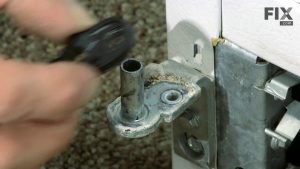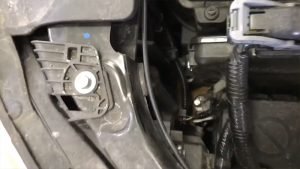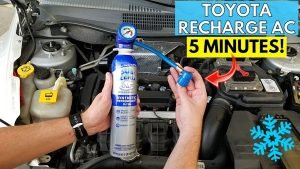
Contents
How to Fix a Dent in Your Car Without Professional Help: A DIY Guide
Got a frustrating dent in your car? Before you shell out big bucks for professional repairs, consider tackling it yourself! While significant damage requires professional attention, minor dents are often manageable with DIY methods. This guide provides step-by-step instructions and helpful tips to successfully remove those pesky blemishes.
🛒 Recommended Product
Disclaimer: These methods are best suited for small, shallow dents without paint damage. Larger or deeply embedded dents may require professional bodywork. Always proceed with caution and prioritize safety.
Assessing the Damage:
Before starting, carefully inspect the dent. Determine its size, depth, and location. Note any paint damage. If the paint is cracked or chipped, the DIY approach might be less effective and may lead to an uneven repair.
Method 1: The Boiling Water Method (For Small, Recent Dents):
This method works best on small, recent dents in plastic or aluminum body panels where the metal hasn’t fully cooled and hardened after impact.
- Prepare the Area: Clean the dented area thoroughly with soap and water. Dry it completely.
- Boil the Water: Bring a kettle or pot of water to a rolling boil.
- Apply the Heat: Carefully pour the boiling water over the dented area. Work slowly and avoid scalding yourself. Let the water sit for a minute or two.
- Apply Pressure: While the metal is still hot and pliable, gently use your fingers or a suction cup to push the dent back into place. Work gradually and evenly. You might need to repeat steps 2-4 several times.
- Check for Success: Once the dent is mostly removed, let the area cool completely. Assess the results.
Method 2: The Dry Ice Method (For More Stubborn Dents):
This method uses the rapid sublimation of dry ice to contract the metal and pop out the dent. Always wear appropriate safety gloves and eye protection when handling dry ice.
🛒 Recommended Product
- Prepare the Area: Clean the dented area thoroughly and dry it completely.
- Apply Dry Ice: Wrap a piece of dry ice in a towel. Do not touch dry ice directly with bare skin. Apply the wrapped dry ice to the dent, holding it firmly in place for a few minutes. The rapid temperature change should cause the metal to contract.
- Apply Pressure (Optional): If the dent doesn’t fully pop out, you might need to apply gentle pressure with your fingers or a suction cup while the dry ice is applied.
- Check for Success: Once the dry ice is removed, let the area reach room temperature and assess the results.
Method 3: The Plunger Method (For Relatively Shallow Dents):
This is a simple method for very shallow dents.
- Prepare the Area: Clean the area thoroughly and dry it completely. Lubricate the area with dish soap and water to create a good seal.
- Apply the Plunger: Firmly press the plunger onto the dent, ensuring a good seal. Pull the plunger sharply away. This will create suction and help to pull the dent out.
- Check for Success: Repeat as needed until you achieve the desired result.
Important Tips and Common Mistakes to Avoid:
- Start with the least invasive method. The boiling water method is a good place to start.
- Be patient and gentle. Avoid applying excessive force, which can damage the paint or surrounding area.
- Don’t rush the process. Allow sufficient time for the metal to cool or heat appropriately.
- Consider using a dent removal kit. These kits often contain tools to aid in the repair process, although this method will still need careful execution.
- Assess the results carefully. If the dent persists or the paint is damaged, it’s best to seek professional assistance.
- Never use excessive force. This can cause further damage.
When to Call a Professional:
If the dent is large, deep, involves significant paint damage, or if the above methods prove ineffective, it’s always best to consult a professional auto body repair shop. They have the expertise and tools to handle complex damage efficiently and effectively.
By carefully following these instructions and taking necessary precautions, you can often successfully remove minor dents from your car without the need for expensive professional repairs. Remember safety first, and don’t hesitate to seek professional help if needed.
🛒 Recommended Product
FAQ
Q. What are the easiest methods to remove small dents from my car without professional help?
A. For minor dents, particularly those that haven’t broken the paint, you can try using a plunger, boiling water, or a DIY dent puller kit. A plunger creates suction to pull out the dent, boiling water can help relax the metal, and dent puller kits provide tools for more controlled removal. Remember to clean the area thoroughly before attempting any method.
Q. How effective is using boiling water to remove a dent?
A. Boiling water is most effective on smaller, less severe dents in aluminum or relatively thin metal panels. The hot water expands the metal, sometimes allowing the dent to pop out. It’s a quick and inexpensive method, but success depends heavily on the dent’s size and the car’s material. It may not work for larger or deeper dents.
Q. My car has a dent with some paint damage. Can I still fix it myself?
A. If the paint is chipped or cracked, DIY methods are less likely to be successful and may even worsen the damage. For dents with paint damage, it’s usually best to seek professional help to avoid further complications. Attempting DIY repairs on damaged paint could lead to an uneven surface or a less professional looking result.
Q. What tools do I need for a DIY dent repair kit?
A. DIY dent puller kits usually include a glue puller, various sized suction cups, and a metal tab/pulling tool. They might also include a bridge puller or other specialized tools. It’s crucial to choose a kit appropriate for the size and type of dent. You’ll also need rubbing alcohol or similar cleaning agent to prepare the area for the glue puller.
Q. How can I prevent future dents in my car?
A. Park further away from other vehicles in parking lots to minimize the risk of door dings. Be mindful of your surroundings when driving, especially in tight spaces or areas with potential hazards. Consider investing in a car cover to protect your vehicle from hail or debris.
Q. What should I do if my DIY attempt fails?
A. If your attempts to remove the dent yourself are unsuccessful, don’t continue to force it. You risk causing further damage to the paint or metal. It’s always best to consult a professional for more complex or persistent dent repairs. They have the expertise and tools to properly address the issue without causing additional harm.
Related Articles
How to Change a Flat Tire Quickly
How to Change a Flat Tire Quickly and Safely: A Step-by-Step Guide Finding yourself with a flat tire is never fun, but knowing how to change it quickl…
How to Remove Pet Hair from Car Seats
How to Remove Pet Hair from Car Seats: A Comprehensive Guide Do you love your furry friend but dread the inevitable aftermath of their car rides? Pet …
How to Clean Car Upholstery at Home
How to Clean Car Upholstery at Home: A Step-by-Step Guide Keeping your car’s interior clean and fresh is crucial for both aesthetics and hygiene…
Affiliate Disclosure: As an Amazon Associate, I earn from qualifying purchases made through links on this site.







